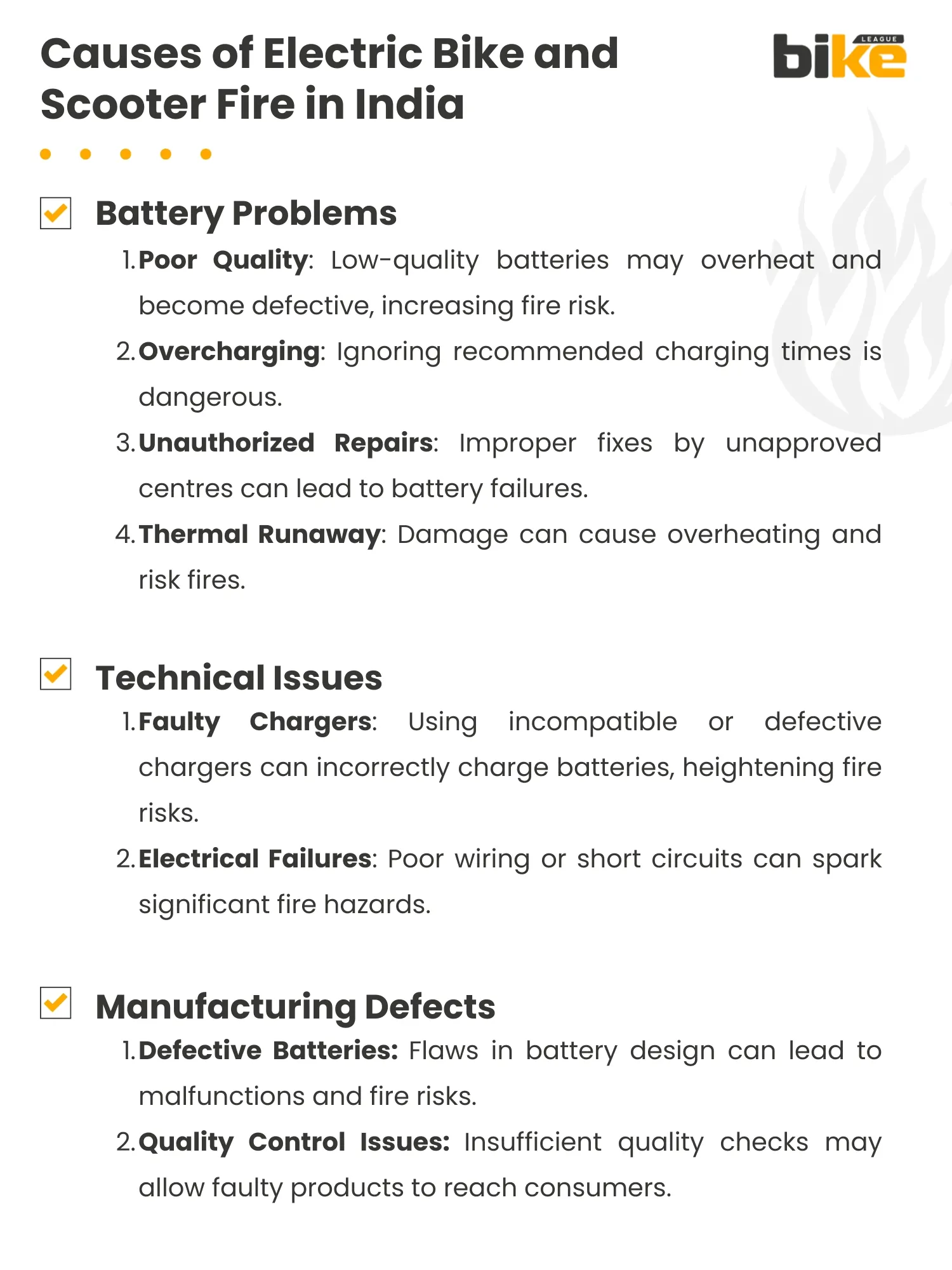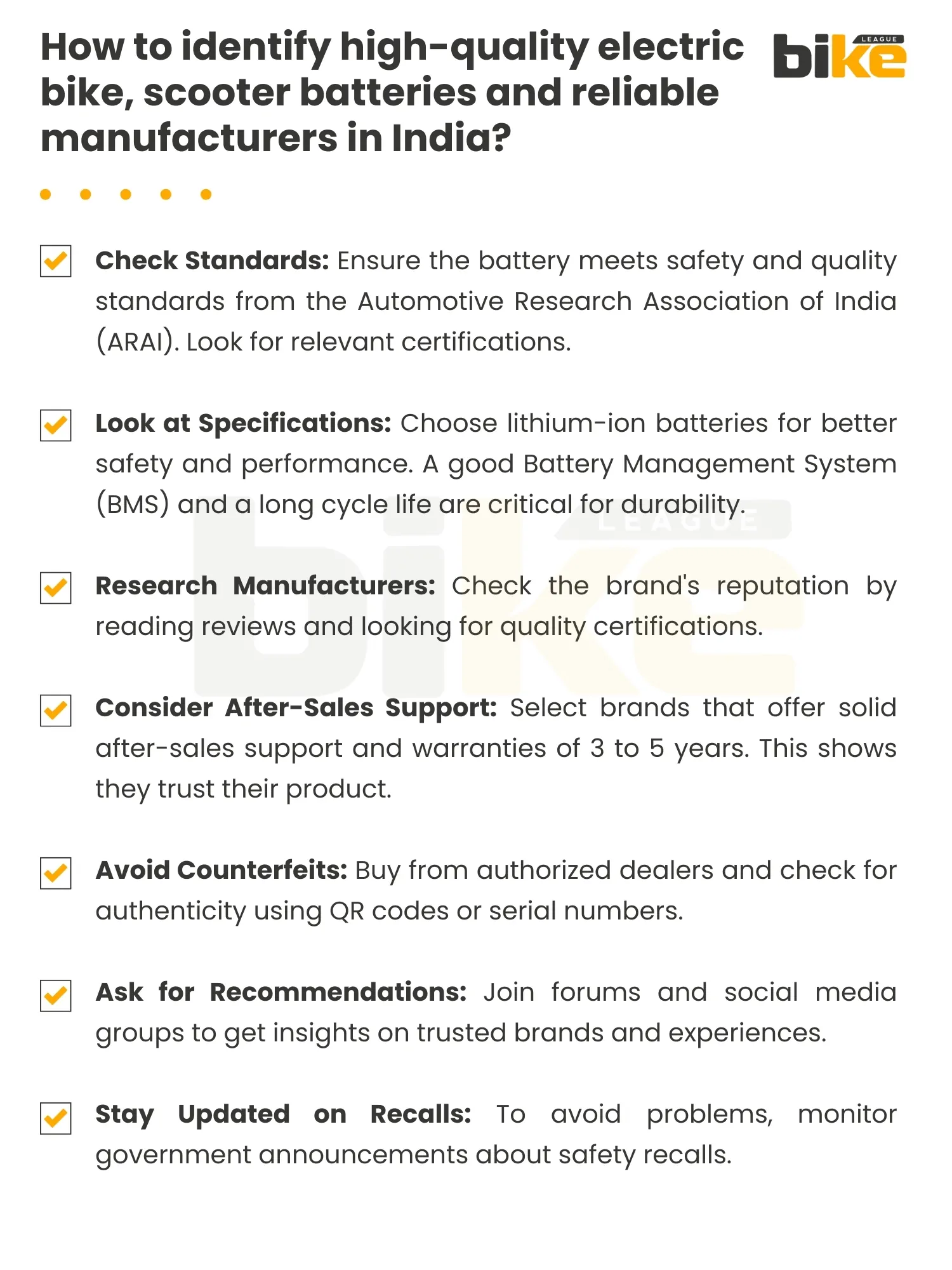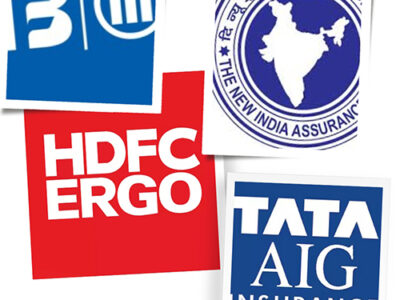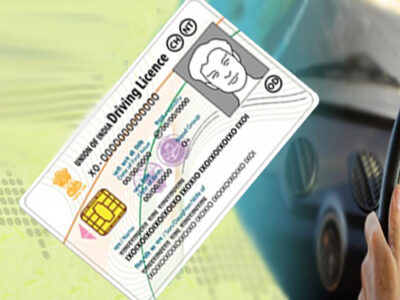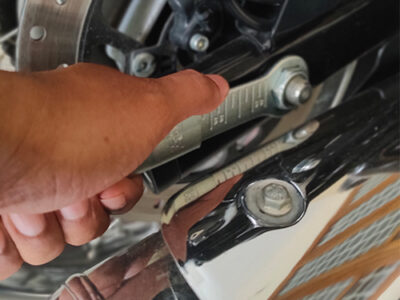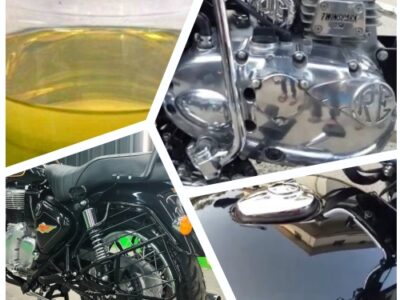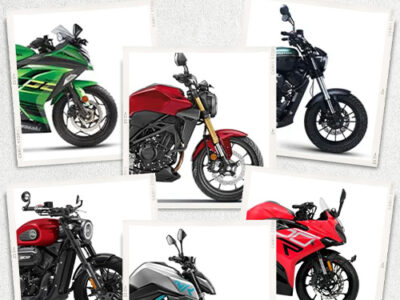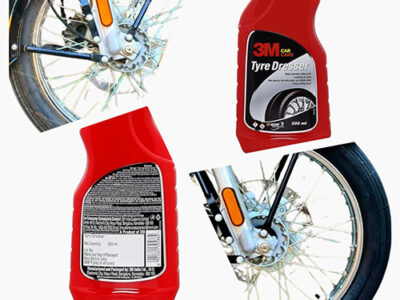
|
Getting your Trinity Audio player ready...
|
Long story short: The rapid rise of electric bikes and scooters on Indian roads is exciting. Still, it has an unsettling twist: a surge in electric bike and scooter fire incidents in India. This alarming trend has ignited significant safety concerns among consumers and regulators, prompting a closer examination of the risks involved.
As these incidents make headlines, they cast a shadow over the safety of electric bikes and scooters. This can undermine public confidence and slow the adoption of electric mobility across the country. However, addressing these issues can pave the way for a safe and sustainable future in electric two-wheeler transportation.
Causes of Electric Bike and Scooter Fire in India
Electric bikes and scooters have surged in popularity but come with an important safety consideration: fire hazards. Understanding the primary causes behind these incidents can help users enjoy their rides with peace of mind. Let’s dive into three key factors: battery problems, technical issues, and manufacturing defects.
1. Battery Problems
The heart of most electric bike and scooter fires lies within their batteries, particularly lithium-ion ones. While these batteries pack a powerful punch, they also bring certain risks:
- Poor Battery Quality: Opting for low-quality batteries can lead to overheating and defects, setting the stage for potential fires.
- Overcharging: Ignoring the recommended charging times is risky. Overcharging can cause batteries to heat up excessively and even ignite.
- Cheap or Unauthorised Repairs: Batteries hastily made or improperly repaired by unauthorised service centres are more likely to fail when needed.
- Thermal Runaway: If a battery is damaged, it might enter a dangerous cycle known as thermal runaway, overheating uncontrollably and risking a fire.
2. Technical Issues
Beyond batteries, technical malfunctions in electrical systems also pose fire threats to e-bikes and scooters. Here are a few culprits:
- Faulty Charging Equipment: Using incompatible or defective chargers can lead to improper charging, increasing the chance of battery fires.
- Electrical Failures: Issues like faulty wiring, loose connections, or short circuits can spark significant fire risks that are best avoided.
3. Manufacturing Defects
Lastly, manufacturing defects can sadly contribute to fire hazards as well. Consider these elements:
- Defective Batteries: Sometimes, a battery’s design has flaws that can lead to malfunctions and, in turn, increase fire risk.
- Inadequate Quality Control: When manufacturers cut corners on quality control, defective products can slip through the cracks, putting consumers at risk.
By staying informed about these dangers, riders can take proactive steps to ensure their electric bikes and scooters remain enjoyable and safe on the road. Always choose quality components, stay vigilant about charging practices, and watch out for potential technical glitches. This sense of empowerment and responsibility is key to promoting safety in electric mobility.
Risks Associated with Electric Bike and Scooter Fire in India
Electric bikes and scooters have transformed urban mobility, offering convenience and eco-friendliness. However, lurking beneath their sleek exteriors are risks that demand our attention, especially regarding fire incidents. Let’s delve into the critical aspects of fire hazards associated with these popular modes of transport.
1. Personal Safety at Stake
Injuries and Tragedies
Unfortunately, fires involving e-bikes and scooters can result in serious injuries and even fatalities. Take, for instance, the alarming statistics from London in 2023, where 143 e-bike fires and 36 e-scooter fires resulted in three tragic deaths and around 60 injuries. These numbers are a stark reminder that safety must always be a priority.
Explosive Fire Dynamics
Lithium-ion batteries, the technology that powers e-bikes, can also be incredibly volatile. Once a battery goes into thermal runaway, it can ignite a fire that’s dangerous and nearly impossible to control without specialised firefighting tools. This explosive nature puts riders and bystanders at significant risk, highlighting the need for caution when using and charging these devices.
2. Property Damage Nightmares
Impact on Homes and Businesses
The ramifications of e-bike and scooter fires extend beyond personal safety – they can wreak havoc on property. A chilling example is a fire in Brixton, London, initiated by a faulty e-bike battery. This led to devastating damage in a first-floor flat. Such incidents showcase how quickly a beloved transport mode can become a source of destruction.
Challenges in Fire Containment
The swift spread of flames from lithium-ion batteries can lead to catastrophic outcomes before firefighters can act. This risk is compounded when multiple devices are charging nearby. It’s a sobering reminder of how easily fires can spiral out of control.
3. Environmental Implications
Toxic Emissions
The fallout from lithium-ion battery fires can extend to environmental concerns as well. When these batteries burn, they don’t just produce smoke – they release toxic gases and particulates that contribute to air pollution and pose serious health risks to anyone nearby. The environmental impact is a growing concern, highlighting the importance of safe handling and storage.
Waste Management Woes
Finally, consider the issue of waste management. Many people aren’t aware that improper disposal of damaged or faulty batteries can have dire environmental consequences. If not recycled correctly, these batteries can end up in landfills, leaching harmful chemicals into the soil and water. Ensuring proper disposal is crucial to minimise our ecological footprint.
Prevention Measures & Safety Guidelines for Electric Bike and Scooter Fire in India
Safety should be a top priority for everyone involved in electric bikes and scooters—users, manufacturers, and regulators alike. By actively following and promoting safety guidelines, we can help prevent the risks associated with electric bike and scooter fires and foster a safety culture in this burgeoning industry. Let’s explore how each group can play a vital role in keeping our rides safe and sound!
1. For Users: Your Ride, Your Responsibility
Charge with Care
Always follow the manufacturer’s charging instructions. Avoid overcharging and only use the provided charger or certified third-party chargers. Remember, charging should never be left unattended or done overnight to prevent overheating.
Stay Informed About Batteries
Familiarise yourself with the potential dangers of lithium-ion batteries. Proper storage and handling are key!
Safety Gear and Rules of the Road
Wearing a helmet can drastically lower your chances of head injuries. Also, always follow traffic laws, use bike lanes whenever possible, and stay alert while driving.
Keep It Well-Maintained
Regular maintenance is essential to ensure your e-bike or e-scooter runs smoothly. Routine checks help prevent mechanical failures that could lead to accidents or fires.
2. For Manufacturers: Innovate with Safety in Mind
Commit to Battery Safety Standards
Ensure that batteries meet or exceed safety regulations like UL 2271 for lithium-ion batteries used in e-mobility products. This involves comprehensive testing to address any fire risks related to thermal runaway.
Prioritise Quality Control
Implement stringent quality checks throughout the manufacturing process to catch and correct any defects that could compromise user safety.
Educate Your Customers
Equip your products with clear, concise instructions and safety information so users can handle and operate their devices confidently and safely.
Design for Safety
Invest in enhancements like improved battery enclosures and robust electrical systems to elevate the safety standards of your devices.
3. For Regulators: Paving the Way for Safer Rides
Enforce Safety Standards
Ensure strict compliance with established safety and performance standards for e-bikes and e-scooters, especially concerning battery safety.
Launch Public Awareness Campaigns
Educate the public about the risks and proper safety protocols related to e-bikes and e-scooters. Knowledge is power, and informed users can significantly reduce accidents.
Develop Safe Infrastructure
Create dedicated bike lanes and safe riding environments to minimise conflicts between e-bike and e-scooter users and motor vehicles, enhancing overall road safety.
Establish Incident Reporting Systems
Create a framework for reporting and analysing incidents involving e-bikes and e-scooters. This valuable data can help identify trends, uncover common causes of accidents, and shape future safety regulations.
What specific regulatory measures are being implemented to improve the safety of electric bikes and scooters in India?
India is actively implementing regulatory measures to enhance the analysis of electric bikes and scooters. Key initiatives include:
1. Automotive Industry Standards (AIS)
The Automotive Industry Standards Committee (AISC) has developed specific requirements for electric powertrains in motor vehicles, such as AIS 038 (Rev. 2), which outlines safety standards for electric two-wheelers.
2. Battery Safety Norms
In response to safety concerns, the Ministry of Road Transport and Highways (MoRTH) has introduced regulations focusing on battery safety, including standards for battery management systems, thermal propagation due to internal cell short circuits, and other safety requirements to prevent fire incidents.
3. Vehicle Certification
The Automotive Research Association of India (ARAI) and other designated agencies are responsible for testing and certifying electric scooters and bikes before they enter the market to ensure compliance with safety standards.
4. Consumer Protection Investigations
Regulatory bodies like the Central Consumer Protection Authority (CCPA) are actively investigating manufacturers regarding service standards and product quality. For instance, Ola Electric faced scrutiny after numerous consumer complaints, leading to an investigation by the Bureau of Indian Standards (BIS).
5. FAME India Scheme
The Faster Adoption and Manufacturing of Hybrid and Electric Vehicles (FAME) scheme incentivises the adoption of electric vehicles while emphasising safety and performance standards. Phase II of the scheme continues to support the development of safe and reliable electric mobility solutions.
How can consumers identify high-quality batteries and reliable manufacturers in India?
Picking the correct battery for your electric scooter or bike is about knowing what to look for. Here are some engaging steps to help you make an informed choice and ensure you invest in a high-quality, reliable battery:
1. Check Compliance with Standards
Start your journey by ensuring the battery meets essential safety and quality standards, like AIS 156 and AIS 038 Rev. 2, which are pivotal for electric vehicle safety. Look for certifications from trusted organisations like the Automotive Research Association of India (ARAI) or other reputable testing agencies—these stamps of approval can give you peace of mind.
2. Inspect Battery Specifications
Delve into the details! Opt for lithium-ion batteries, renowned for their safety and efficiency over traditional lead-acid options. Check if the battery has a robust Battery Management System (BMS) to prevent overcharging, overheating, and short circuits. And don’t forget to consider the cycle life—higher numbers mean more durability, making your investment worthwhile in the long run.
3. Research Manufacturer Reputation
Get to know the brand behind the battery! Read reviews, explore testimonials, and evaluate their presence in the market. Trusted manufacturers often flaunt certifications such as ISO 9001 for quality management systems, establishing their credibility in the industry.
4. After-Sales Support
Choose brands that back their products with solid after-sales support. Look for warranty terms that stretch comfortably over 3 to 5 years—this shows confidence in product quality and provides assurance against potential issues.
5. Avoid Counterfeit Products
Always buy from authorised dealers or the manufacturer to avoid counterfeit products. Protect your investment by verifying authenticity through QR codes, serial numbers, or other unique identifiers. It’s a small step that can save you from significant headaches.
6. Seek Recommendations
Tap into the wisdom of the community! Join forums, social media groups, and local electric scooter or bike user communities. These platforms are treasure troves of insights about trusted brands and products that fellow users swear by.
7. Stay Informed About Recalls
Stay proactive! Regularly check for announcements from the government or manufacturers regarding any recalls or safety issues associated with specific batteries or vehicles. Being informed keeps you ahead of any potential concerns.
What advancements are being made in battery technology to reduce the risks of Electric Bike and Scooter Fires & overheating in India?
The future of electric scooters and bikes in India is bright, especially with the exciting advancements in battery technology to enhance safety. As the demand for EVs grows, so does the focus on preventing risks like overheating and fires. Let’s dive into some groundbreaking developments making waves in this field:
1. Solid-State Batteries: A Game Changer
Imagine batteries that not only last longer but are also much safer! Solid-state batteries are revolutionising the industry by using solid electrolytes instead of the traditional liquid ones, dramatically lowering the chances of overheating and fires. Companies like Ola Electric are at the forefront, working tirelessly to integrate these innovative batteries into their electric scooters by next year.
2. Enhanced Thermal Management Systems: Keeping Cool Under Pressure
Keeping battery temperatures in check is vital, and that’s where cutting-edge thermal management systems come in. Techniques like advanced liquid cooling, phase change materials, and superior heat dissipation designs are now in play. These innovations ensure the safety and performance of EV batteries, allowing drivers to hit the road with peace of mind.
3. Lithium Iron Phosphate (LFP) Batteries: Safety First
For a good reason, LFP batteries are gaining momentum in the EV landscape! They offer a significant safety advantage with their natural resistance to overheating and thermal runaway compared to traditional lithium-ion batteries. Indian manufacturers are increasingly adopting this technology, making strides toward a more secure driving experience.
4. Smart Thermoresponsive Separators: The Future of Battery Safety
Imagine batteries that can sense danger and protect themselves! Researchers are developing smart thermoresponsive separators that respond to temperature spikes by shutting down battery operation, effectively preventing potential fires. This forward-thinking approach aims to create self-protecting lithium-ion batteries with longer lifespans, enhancing safety for all users.
5. Collaboration for Innovation: The Power of Partnerships
To stay ahead, Indian companies are forming strategic partnerships to tap into advanced battery technologies. A great example is Amara Raja, which has collaborated with China’s Gotion to produce lithium-ion cells locally. This helps the company to strongly focus on boosting safety and performance standards.
These innovations showcase the dynamic efforts within India’s EV industry to tackle safety concerns head-on. With these advancements, the road ahead looks promising for electric scooters and bikes.
Frequently Asked Questions About Electric Bike and Scooter Fire in India
1. What are the leading causes of electric bike and scooter fire in India?
The leading causes of electric bike and scooter fires in India are primarily related to issues with lithium-ion batteries. These include faulty battery cells and modules, poor manufacturing standards, and the vulnerability of lithium-ion batteries to thermal runaway. Additionally, using low-quality or counterfeit components, improper charging practices, and physical battery damage can contribute to fire incidents.
2. What new safety regulations have been implemented for electric two-wheelers in India?
India has implemented several new safety regulations for electric two-wheelers, and they are
- The Bureau of Indian Standards (BIS) introduced IS 18590:2024, which sets stringent safety requirements for the powertrain components of electric two-wheelers.
- New battery safety norms have been implemented to eliminate unreliable manufacturers using substandard components.
- The Automotive Research Association of India (ARAI) has conducted crash tests for electric two-wheelers, which could lead to mandatory crash testing regulations.
3. How can we prevent electric scooters or bikes from catching fire?
To prevent electric scooters or bike fires, check out these steps.
- Use only the original charger provided by the manufacturer.
- Avoid charging the vehicle in extreme temperatures or direct sunlight.
- Do not leave the battery charging unattended or overnight.
- Regularly inspect the battery for signs of damage, swelling, or leakage.
- Follow the manufacturer’s guidelines for charging and maintenance.
4. What should I do if my electric scooter or bike catches fire?
If your electric scooter or bike catches fire:
- Immediately move away from the vehicle to a safe distance.
- Call emergency services (fire department) immediately.
- Use a Class B or ABC fire extinguisher to control the fire if possible and safe.
- Please do not attempt to extinguish the fire with water, as it can exacerbate lithium-ion battery fires.
- Evacuate the area if the fire is enclosed, as toxic gases may be released.
5. How are Indian manufacturers improving the safety of electric scooters and bikes?
Indian manufacturers are improving safety through various measures:
- Implementing more robust battery management systems (BMS) to monitor battery health and prevent overcharging.
- Using higher quality battery cells and components.
- Adhering to new safety standards set by the Bureau of Indian Standards.
- Conducting more rigorous testing, including crash tests.
- Investing in research and development for safer battery technologies.
6. What are the government’s efforts to ensure the safety of electric two-wheelers in India?
The Indian government has taken several steps to ensure the safety of electric two-wheelers:
- New safety standards will be introduced through the Bureau of Indian Standards (BIS).
- Implementing stricter battery safety norms.
- Demanding the return of subsidies from manufacturers using Chinese parts that may not meet local safety standards.
- Encouraging the development of comprehensive flame-retardant standards for the automotive industry.
- Issuing guidelines for installing and operating electric vehicle charging infrastructure.
7. How do I choose a safe electric scooter or bike in India?
To choose a safe electric scooter or bike in India:
- Purchase from reputable manufacturers who comply with the latest safety standards.
- Look for models that have undergone crash testing and safety certifications.
- Check if the vehicle uses a high-quality battery management system.
- Read consumer reviews and expert opinions on the safety features of different models.
- Ensure the manufacturer provides clear safety guidelines and after-sales support.
Other related links from Bikeleague India
- Petrol Bike Fire in India: Causes, Risks, and Prevention
- Engine braking in bikes: Detailed guide for riders
- Motorcycle fuel tank – How to maintain properly
- Defensive driving for bikers in India – The Ultimate guide
- Bike Engine Power Converter | Get accurate power units
Conclusion
We hope you know about the electric scooter and bike fire in India and the reasons behind it. If you have any questions or need more information about the electric scooter and bike fire in India, please email us at bikeleague2017@gmail.com or leave a comment below. We’re always here and happy to help! However, don’t forget to check out Bikeleague India on our social media platforms to stay connected!

